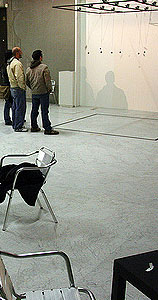Research Questions and Approach
Our analytic framework takes account of the diversity of art-science engagements by drawing out i) the institutional settings that allow for particular kinds of collaborative spaces to open up, ii) the political milieus within which such collaborations are negotiated, iii) the epistemic communities that are brought into play through this process, and iv) the aesthetic matters and technological mediums through which collaboration takes place.
These are the broader analytic coordinates behind our study of collaborative productions. Specifically, our work develops as many ‘how’ as ‘why’ questions, as it situates collaborations within a broader field of interpretative interrogations: What facilitates or makes collaborations possible, what motivates the people involved, what meanings and intentions are attached to their work; and what constitutes the range and diversity of public engagement?
We use participant observation, interviews, focus groups, surveys, and visual interpretative methods in order to generate detailed descriptions and analyses of the day-to-day activities and products of five sites of art-science collaboration. We explore the interplay between the institutional and political settings where geographic knowledge is produced, as well as the epistemic structures, technologies, and genres that mediate such knowledge.





